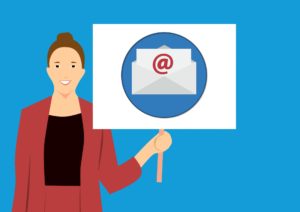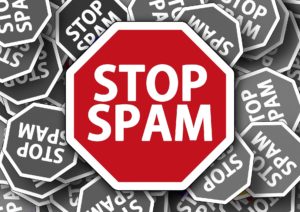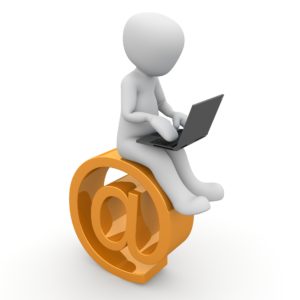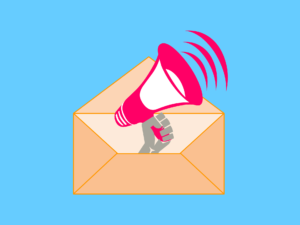Understanding Marketing Automation

What is and how can you use marketing automation?
If you want to grow your business and be very efficient with your sales, then you need to consider automating your marketing. Not only will it skyrocket your sales, but it will free up your time for you to complete other tasks within your business.
But what is marketing automation and how can it help your business? Here’s a quick guide for you.
What Is Marketing Automation?
Marketing automation is any activity used to promote a brand that is not manually undertaken. This can include numerous activities such as social media, email marketing or SMS. Not all of these activities have to be included in a campaign and most often email marketing is the prime marketing automation outlet.
Marketing automation is initiated based on a number of behaviours. For instance, an email sequence is instigated when a user subscribes to a mailing list, or content is published on social media when someone shares another piece of content.
How Can Marketing Automation Be Used?
Generally, the main purpose of marketing automation is to convert the prospects into customers. However, marketing automation can be deployed in numerous ways. For instance, one of the main applications is to have a cart abandonment campaign where a user who has abandoned their purchase is emailed to encourage them to complete. This can be done over two or three emails over numerous days.
Another common tactic is to create an email sequence that follows a download or subscription to an email marketing list. This can be really great, as it builds trust with an audience and demonstrates your knowledge and experience within a niche. You can also monitor your results to see who is really interested in your content.
Finally, marketing automation can be used to collect feedback after a conversion or to create repeat custom. This deployment is really useful as it lowers the customer acquisition cost and improves revenue. Those customers who have already purchased are also more likely to spend more if they were satisfied with their original purchase.
Enticing reviews can also be beneficial as peer reviews are trustworthy according to customers and the more reviews you can generate, the more conversions you will have.
What Are The Advantages Of Marketing Automation?
There are numerous advantages of marketing automation and very few drawbacks that mean automation should be part of your marketing strategy. Some of the key benefits include:
Reduce Time Spent On Marketing: While marketing generates sales and leads, the more time you spend on it the higher your acquisition costs. With marketing automation, you can create your campaign and then set it to go, leaving your software to do the hard work. Therefore, less time is spent on repetitive marketing, reducing costs.
Be More Responsive: Customers want answers and information immediately. This can be very hard to achieve when you are a small organisation and you wear many hats in your business. But marketing automation can often provide information quickly helping customers make informed purchasing decisions.
Be More Relevant: Content can be created for campaigns that are specific to services, products or information the prospect wants. For instance, if they are interested in boy’s shoes, campaigns can be sent just displaying a selection of boy’s shoes and related items. Therefore, content is more relevant to the consumer and has a higher chance of converting them.
Can See Sales Funnel Work: Another benefit of automation is that it can help you directly see when prospects might need to be given an extra push to convert with a phone call. This can be very useful when you are selling services.
Conclusion
Marketing automation is a significant advantage for businesses using it. It can help reduce marketing costs and improve conversions working tirelessly while you do other tasks for your business. There are numerous ways you can employ marketing automation in your business. How you use it for your brand is up to you.
Do you use marketing automation in your business?
Read post 1 Comment. Tagged in: email automaton, email marketing, marketing automation
How To Draw Attention To Key Information

How you can draw attention to important information in your emails.
Any email that’s successful has done one thing right: it’s got the audience to pay attention to the key information. This information can be varied from price amendments to delivery changes. Whatever the information, the method to draw attention is practically the same.
In fact, there isn’t just one aspect that will help draw your audience’s attention towards key information, there are many. This quick guide will help you design an email campaign to get your message across and ensure subscribers don’t miss out on important information.
1. Get Your Email Subject Line And Preheader Text Right
The first thing you need to do is ensure that your email subject line and the preheader text convey the importance of your message. At the same time, you need to avoid words associated with spam so your email stays out of the junk box.
You can do this by using possessive sentences that give the reader ownership and convey some urgency to the message. You can also read our recent blog post about what words to avoid in your email to stay out of spam boxes.
2. Less Text
Text takes time to read and can be frustrating for your audience. Therefore, you need to be concise with your email text and only write what’s necessary. You can highlight important text by putting it in bold, but this should be seldom used.
Never use capital letters in an email as this comes across as aggressive and can damage your brand’s reputation. Colour usage in text is okay, but it’s best left alone as certain colours can convey emotions that you might not want to attribute to your email message.
Finally, try to shorten paragraphs so they’re only a sentence or two long. This is better for mobile display and in addition makes it easier for your audience to read.
3. Use Images And GIFs
Another way for you to convey a message is to use images. Images are processed by the brain much faster than text, have a higher retention rate, and are more attractive to the human eye.
GIFs are a popular way to display a message and they have the bonus of being associated with a cultural reference or are humorous. Therefore, your message has an added attractiveness and higher chance of being retained. Because they are also moving images, they draw the attention of the eye.
GIFs can be used for various messages including:
- Adding humour to recent issues your business has suffered (i.e. system down).
- Showcasing new products/services.
- Telling an important story (i.e. new staff member)
- They can help demonstrate complex concepts.
Image/GIF placement is also important. People tend to read the left-hand side of a screen more than the right-hand side.
4. Send Emails When Audiences Will Read Them
It’s important to ensure your emails are being sent at the right time. Sending an email when people will just delete it because they are too busy isn’t useful. Instead, you need to analyse when people are less busy or are more receptive to emails.
It can be a complex operation to determine this, but by A/B testing campaigns you should be able to determine the best time and day to send them. If you haven’t done this yet, you should prioritise it for the best results.
Conclusion
Any email campaign you send will convey important information that you’ll need your audience to digest and retain. There are lots of different stages that are needed for your emails to get the attention they need. One of the most important steps is using visuals as part of the email and GIFs are very effective visual pieces of information to help.
Do you use GIFs in your email marketing campaigns? What tactics do you use for your audience to read and retain key information?
Let us know in the comments below.
Image from Pixabay
Read post 1 Comment. Tagged in: Email Strategy, Image Usage, Images In Emails
30+ Words That Will Send Your Email To The SPAM Bin Every Time

What words will be blocked by a spam filter?
When you send an email campaign you want your audience to read the message, but spam emails are a significant problem. Your audience doesn’t want them, but an amazing 84% of email traffic is considered spam.
Those running mail servers, are constantly looking for ways to identify spam, to filter it out for their users. Yet, while this improves the user experience of mailbox owners, it does mean that for some businesses, their emails are accidentally labelled as spam and filtered out. If this does happen, the chances of your email being read are dramatically reduced.
There are numerous reasons why an email campaign might attract the attention of spam filters. Some of these are hard to control, but you can control the words used in your subject line, preheader text, and within the content of your email.
Some words will highlight a message as potential spam and therefore be filtered out. By avoiding these words, you can improve the delivery rate of your emails and achieve a better ROI.
Here’s a quick list of word groups to avoid and other ways you can get the same message across.
1. Free/Cheap/Affordable/Save/Incredible Deal
Anything with the word ‘free’, ‘affordable’, ‘incredible deal’, ‘save’ or ‘cheap’ is a bad choice. Even if you place gaps between the letters you’ll likely be tagged as spam. To avoid this, you could use words like ‘complimentary’, ‘on the house’ or ‘without charge’.
Of course, it’s best not to really mention this in your email if you can. Instead, direct them to a landing page with an interesting call-to-action that contains these promises.
2. Act Now/Apply Now/Order Now
These are important because they are something you might use as a call-to-action. They both look urgent and tell the audience what they must do. However, no-one can act on something if they don’t see the message. Therefore, avoid these two phrases in your campaigns.
3. Increase/Guarantee/Promise
These are common words used in a lot of spam and are therefore often filtered out. There’s not much you can replace these words with, so instead, use these words on your landing page from the email campaign.
4. Anything With Marketing
Marketing emails seem to be highly targeted. Words in this group include: ‘email marketing’, ‘internet marketing’, ‘multi-level marketing’, ‘online marketing’, ‘search engine listings’ and ‘web traffic’. There are just too many companies who don’t provide a good service in these areas and make fake promises that mail servers tend to be more cautious.
5. Medical Related
There has been a long-standing issue with online medical sales, so anything that looks health or medical related is often counted as spam. Some of the common ones include ‘prescriptions’, ‘stop snoring’, ‘weight loss’, ‘diet’, ‘pills’, etc. There’s a long list of these. So, if you’re in the medical profession, or want to use a medical term in your campaign, be warned it might not work.
6. Financial Words
Another common set of words which are targeted by spam filters are those related to the financial services. This could be banking, investments or any currency. There are lots of these words and if you are thinking about using them, then you are likely going to have a smaller audience due to filters.
Notable words include: ‘income’, ‘billion’, ‘cash’, ‘compare rates’, ‘credit’, ‘refinance’, ‘income’, ‘earn’, etc.
Conclusion
You want your email campaigns to be successful, so don’t use words that spam filters target. We’ve given over 30 words you need to avoid using if you are to skip past the spam filters. What you use instead might need to be inventive, but for the potential rewards, it’s worth the investment of your time.
What words do you use in your spam filters? How do you create meaningful copy to avoid spam filters?
Let us know your tips in the comments below.
Image provided by Pixabay
Read post 1 Comment. Tagged in: email copy, email spam, spam
If You Get This Right, You Can Grow Your List

How can colours helps you subscribe more people to your email list?
Growing your email marketing list is one of the most effective ways to grow your business. Not only does email marketing offer one of the best returns, but customers also trust email marketing more because they have opted-in to view this marketing content.
To ensure you have the best results from email marketing, you need to look to grow your email list daily. The larger your list, the more revenue you can generate from every mail you send. However, growing your list isn’t easy.
One of the greatest challenges you might find when dealing with a sign-up form is the colour of a call-to-action, page, or other item on a webpage.
Why Is Colour So Important?
Colour is a vital part of any landing page design. Research has shown that 90% of customers make a decision based on colour alone. Therefore, use the wrong colour, or combination of colours, and your brand could lose out on email details of potential customers.
Colours are also great emotional pulls. Certain colours will invoke feelings in website visitors, so for instance, you can make them jealous of what others have, or fearful of missing out on a good offer.
A mismatch of colours can also have a disastrous impact on marketing. It can put visitors off and lose you potential subscribers. But that doesn’t need to be the case. In fact, you can easily fine-tune your website’s colour scheme to get better results. Here are a few tips:
1. Analogous Colours Are Best
These are colours which are next to each other on the colour wheel. They can be different shades of the same colour or colours which are similar. These blend nicely into the design of the page and help brands to establish a single value.
This tactic is great for those brands who want to use primary colours in their branding. However, it can also be effective with non-primary colours.
2. Opposites Attract
Many say that opposites attract which is no less true for colours. By using colours on the opposite side of the colour wheel you can create stunning designs. Examples of this are blue and orange, red and green, or purple and yellow.
This scheme works best if you are using non-primary colours. Make sure you use the right shade of each of these colours as a slight tweak can look wrong.
3. Contrast
There are many ways you can use contrasting colours to highlight your signup form on any page. For instance, you can contrast the form itself against the rest of the page. This draws the attention away from other content to the sign-up form message and is highly useful if you have placed the form on the right-hand side of the screen where less attention is usually applied by readers.
Another tactic is to contrast the button to the rest of the sign-up form. This is to draw attention to where you want the audience to press. This is really good on a landing page with lots of text.
Your Brand Needs It Identity
One of the most important aspects of marketing is to ensure all the content published, whether it’s email or website design, social media or elsewhere, is aligned to the value and identity of your brand. Any mismatch, however good for increasing engagement, will not be good for your brand in the long-term.
So, look carefully at your brand, its core values and everything else, and determine what colours you can and should use. Then carefully consider what your audience wants to know about your brand and what emotions they want to feel when they buy from you.
This should help you decide what colours to use and how to use them throughout your marketing and especially with your sign-up form.
How do you attract people to use your sign-up form on your website? Have you attempted to change colours to get better results?
Let us know in the comments below.
Image from Pixabay
Read post Post a Comment. Tagged in: sign up forms, signup strategies, subscriptions
Why You Need To Get Your Email Marketing Provider Right

Which email marketing provider is right for you?
Email marketing is a powerful and lucrative marketing avenue. The ROI for most email marketing campaigns can be as high as 4400%. That means for every $1 you spend on email marketing; you can recoup $44. It can also be responsible for more than one in four transactions on a website.
Many factors can influence the success of an email marketing campaign including the list integrity, email design, campaign strategy and the offer you present to the reader. However, there are also many other factors that can affect your long-term email marketing efficiency.
One of these is your email marketing provider.
User Experience Influences Email Marketing Results
The user experience of your website is very much part of the success of your business. The friendlier it is for website visitors, the higher conversation rate you’ll experience. The same can be said for your email marketing provider and your email campaigns.
Some email marketing providers don’t have intuitive interfaces. Therefore, constructing campaigns can be challenging. Those using them, with limited technical ability, can, therefore, opt for more basic email designs which can lead to poorer reception and engagement from subscribers.
Likewise, those email marketing providers with too many design options can be overwhelming, and the best design might not be found or applied.
Data Usage Needs To Be Useful
Another important aspect to consider with any email marketing provider is whether they provide useful reports. Collecting data on your subscriber list and monitoring responses to email campaigns can be vital to making your campaign successful.
For instance, you can notice that someone has opened and clicked through to an offer several times. However, the subscriber might not have ordered anything. There might be several reasons for this such as:
- Delivery costs are too high.
- A website might be confusing.
- A code error on the website.
- They found the product cheaper somewhere else.
- They got disrupted in the buying process.
Without the knowledge of who has, and who hasn’t engaged with your campaigns, you might not know who has clicked through and abandoned the process. This information can be highly useful because you can send another email to prompt them to complete the order.
You could even offer a deal to push them further into making that purchase or ask why they didn’t complete.
Another good report to have is your unsubscribe rates. You can notice the channels where subscribers are coming through and then unsubscribing. For instance, if you notice that those subscribing from Facebook and then unsubscribing is double compared to other channels, you know that you need to change your Facebook campaign.
Cost Of Using The Service
Another factor to consider is the cost of your email marketing provider and what you get for that price. There are numerous price points for providers, but not all of them have the same features for a similar price.
The higher the costs you pay, the more you must earn in revenue for your businesses to maximise profitability. However, you must consider that some providers might cost more, but offer you more features, reports, etc. that can increase the conversion rate for your campaigns.
It is about looking at the balance between cost and features.
Support
Another consideration is also how much support you can get from your email marketing provider. If you don’t get much support from your business’ provider, then you might have severe problems getting the best campaign published.
Consider who offers the best support and what would you do if you had a problem and you didn’t have that support available. Getting private support from another site like Upwork or Freelancer can be expensive and might not be timely.
Conclusion
Your email marketing provider is an important part of your campaigns. Their interface, support and costs can influence the success of your campaigns. Be sure that your supplier is the best one for your brand before you start sending out campaigns.
Who is your favourite email marketing provider? What do they do well and not well?
Let us know in the comments below.
Read post Post a Comment. Tagged in: email marketing, email marketing provider, email systems
Six Alternatives To Mailchimp

Here are six email marketing programs that rival MailChimp
MailChimp is the most popular email marketing app in use. It’s fairly easy to use, has a wide range of marketing activities to attract clients, and has a free setting that provides a good, basic level of email marketing. However, it isn’t the only, or necessarily the best option out there.
So, here’s our quick guide to some of the alternatives to MailChimp, what they have to offer, and how they differ from MailChimp.
1. Your Own Mailbox
The first thing to think about is your own mailbox. The advantage of this is that you can have complete control over the data and when you send content. The challenge is that unless you have great technical skills, you won’t get great looking emails and your server might be blacklisted if too many people count your campaigns as spam.
You’ll also have lots of admin to do such as subscriber changes, etc. that might not be easy.
2. GetResponse
With its drag-and-drop editor, GetResponse is one of the other main contenders for the most used email marketing app. It also allows you to create five split tests, which is one of the highest.
However, there’s no free option, and some people have complained about their customer service. Sometimes they don’t respond, and this can be frustrating. Also, their list management system is criticised.
3. Constant Contact
Another highly used option for email marketing, Constant Contact has great reviews. It has a user-friendly interface and some great pricing based on the number of subscribers you have, but no free option.
Constant Contact does not have a split testing option, which means your business can be missing out on some vital sales because you don’t know what your subscribers prefer. Also, their features aren’t always perfect, especially their auto-response, which means you might need to spend more time to manage your list than you would prefer.
4. Aweber
An email marketing system that allows you to manage your business rather than your email contact list, Aweber is a strong program. It has over 700 templates for you to use and can conduct up to four split tests on your marketing list.
But if you’re looking for a simple import, you’ll be disappointed. Sometimes your subscribers might need to reconfirm their subscription which can limit the size of your email list. This might mean that it’s better to go from zero contacts on this list rather than moving your list.
5. iContact
This is another program that’s good for small businesses. In fact, iContact don’t have many plans above 15,000 contacts in a database, which is small. The app is incredibly easy to use for those who have limited technical knowledge and therefore, those who are new to email marketing and designing emails might benefit from this program.
However, the interface is a little chunky, and this can distract you when you want to get down to business.
6. Fluttermail
Well, we had to mention our own solution, didn’t we! However, we do have a great solution for small businesses. We know that our email marketing is a great earner for your business, so we want to make sure we offer something that will perform.
Firstly, we run your emails through a spam filter and advise you about changes you need to make to ensure maximum delivery. You can also have numerous lists, with different email marketing protocols for each one, with easy to construct emails.
Finally, we offer a wide range of application to help you manage your email marketing campaigns and spread the word about your brand.
We might not have a free account offer, but we do offer a trial for just $1.
What Email Marketing Solution Will You Use?
Your brand needs a strong, powerful email marketing system to help you sell. We believe that at Fluttermail we have an application that will help you. So why not give us a try?
What email marketing solution do you use? What is your experience?
Let us know in the comments below.
Read post Post a Comment. Tagged in: Email marketing software, mailchimp, SaaS
How Did These 2017 Email Marketing Predictions Work Out?

Were the email marketing predictions right?
Early in 2017, there were at least seven email marketing predictions made for the year ahead. Now it’s 2018; we want to look at whether these trends came to pass, or if they were completely wrong.
Here’s our verdict of what happened.
Prediction One: Data-Driven Marketing Will Rule
To be honest, this prediction was true even before the year had started. Data-driven marketing is not just good practice; it’s the only way to optimise your marketing, retain customer loyalty, and return the highest return on your marketing campaigns.
Data is valuable but only if used right. You should be looking at the behaviours of those on your list and determine what the next piece of relevant content should be for them in their customer journey. Then you should send only relevant content to them. Anything else is a waste of time, resources, and potential revenue for your business.
Prediction Two: Mobile Payments Will Come To Inboxes
While mobile payments have come to the email marketing sphere, they aren’t commonly used yet. There are a couple of reasons for this. Firstly, security and privacy – consumers might be apprehensive about payment requests in emails because they look like malicious emails sent every day.
Another concern is cart abandonment. Is there a fool proof way to determine who is interested but not completing an order?
Prediction Three: A Revolution In Email Designs
Some predicted that email personalisation would reach a new level with the design of the email changing based on the subscriber and their preferences/behaviours. This is certainly a powerful trait if it could be realised, but there has been little adoption of this practice.
It wouldn’t take much to implement this strategy, so perhaps this will happen in the coming year? The biggest challenge here is those who view the email online who aren’t subscribers, or when a subscriber forwards an email on to someone else. Will the email change with the new user or will it look ugly with the heavy code it will need?
Prediction Four: Advanced Automation
Automation has been a key factor of email marketing in recent years, and technological improvements have allowed for the processes to get even better. Without automation, costs are high, but now automation allows your business to send emails based on simple behaviours and actions they’ve taken.
Not taking advantage of these can put your business at a serious disadvantage. Instead, you should look at expanding your automation to include the following activities:
- Cart abandonment.
- Email response behaviour.
- Inactivity for a set period.
- Landing on a page.
- Viewing a product online.
- Purchase
These are critical activities for customers and should therefore have an element of automation.
Prediction Five: Behavioural Data Will Shape Marketing Campaigns
This is one of the developments of 2017, with devices like Amazon Echo and Google Home being extensively used. While these devices have had issues, they are highly useful tools for marketers that can determine a user’s likes, dislikes, and consumer purchasing behaviour.
Other data sources can also feed into this information to give marketers a significant picture of how users live and determine what they need and when. Therefore, customers can be provided with the most relevant information at exactly the right time.
Prediction Six: An Email Address Isn’t Enough
Those who thought this was a new trend are certainly wrong. The more information you have on your prospects, the better you can give them the information they need to make an informed purchasing decision.
At the very least you need to collect their name and behaviour on your website. Also, you can collect other information such as interests, objectives, and who they’ve worked with before. This can be collected via a few different tools.
Prediction Seven: Email KPIs Will Not Just Include Open And Click Through Rates
Beforehand we always looked at how many people opened and clicked through from emails. These were benchmarks we all assessed email campaigns against. However, in today’s modern world, these aren’t enough, and there are other statistics we should be looking at to determine the success of campaigns and what the next stage in email strategies should be.
The main adoption would be ROI. However, other statistics will become useful including renewals, repeat orders, etc.
Conclusion
There were lots of predictions for email marketing in 2017. Some have already come to pass while others have not yet. In 2018, we are going to see more email marketing trends develop and the campaigns becoming more effective. After all, email marketing still reigns as the most profitable digital marketing sales avenue.
What changes have you made to your email marketing in 2017? What changes will you make in 2018?
Let us know in the comments below.
Read post Post a Comment. Tagged in: email marketing predictions, email marketing strategy, email marketing tactics
The Best Email Marketing Subject Lines Ever

What are the best email marketing subject lines?
The subject line you use in an email is more important than you probably realise. 47% of email users will open an email based on the subject line alone. In addition, some 68% of email users will unsubscribe from an email marketing list based on your subject line.
These statistics aren’t surprising when the average person receives 100 emails per day. To stand a fair chance, research has shown that your email subject lines should be brief, descriptive and contain the following:
- Personalisation
- A reason for the reader to open the email.
- Urgency.
This sounds like a lot for a single line. But it is achievable. There are some great examples of email marketing subject lines, and they can often be grouped into several different categories.
Below we have given you some examples, so you can try to identify what subject lines most align with your offer and message. Then you can tailor these to be specific to your audience and brand.
Fear Of Missing Out
Nobody wants to miss an offer, and brands take advantage of this psychological need of consumers. Subject lines that want to use this either contain scarcity and/or urgency. Time-sensitive emails especially have proven to increase open rates.
Some good examples are:
- “Uh-oh, your prescription is expiring.”
- “You’re missing out on points.”
- “[URGENT] You’ve got ONE DAY to watch this…”
- “Your 7-figure plan goes bye-bye at midnight…”
- “[WEEKEND ONLY] Get this NOW before it’s gone…”
- “Mary, Earn double points today only.”
- “Tonight only: A denim lover’s dream.”
Two things to note; writing in capital letters is sometimes viewed as spam, and personalisation, such as including offers relevant to subscriber activity, can increase open rates.
Curiosity
People love to make discoveries, and email subject lines that attempt to hide some information can receive higher open rates. There are several ways you can do this, which include leaving your subject line open-ended or asking your audience a question.
Some good examples include:
- “*Don’t Open This Email*”
- “Last Day To See What This Mystery Email Is All About”
- “Is this the hottest career in marketing?”
- “9 Disgusting Facts about Thanksgiving”
- “A faster donkey.”
- “? a surprise gift for you! {unwrap}”
Humour
Including humour in your emails can be really successful because people love to laugh, which is why comedy programmes, like Friends and The Big Bang Theory, become huge hits and multimillion-dollar programs which keep viewers coming back again and again.
The two programs mentioned use their own version of the subject line (Episode Title) to make a humorous remark to entice audiences to take interest in the episode.
Likewise, you can create subject lines that make your audience laugh and want to open your email.
- “Deals That Make Us Proud (Unlike Our Nephew, Steve)”
- “Pairs nicely with spreadsheets”
- “Need a day at the beach? Just scratch n’ sniff your way to paradise…”
- “Try To Avoid These 27 People On New Year’s Eve”
- “Yes, I’m Pregnant. You Can Stop Staring At My Belly Now.”
- “NEW! Vacation on Mars”
Pain Point
If you really understand your buyers, which you should do, then you’ll know their pain and what they need to resolve their issues. Some good examples are:
- “Feed your guests without breaking the bank.”
- “Where do all these toys go?”
- “Get more kitchen space with these easy fixes.”
- “Stop wasting money on ink.”
- “Your beauty issues, solved”
- “Since we can’t all win the lottery…”
- “Stop wasting time on mindless work.”
- “Learn a language with only 5 minutes per day.”
Personalised
People want to feel special and that an email sent to them is literally only for them. They also want to have content that is relevant to their needs and behaviour. There’s no point sending a discount for kids’ clothes to someone who has no children!
Research has also shown that personalisation can boost email open rates by 29.3%.
Some good examples of personalisation emails are:
- “Mary, check out these hand-picked looks.”
- “Happy Birthday Mary – Surprise Inside!”
- “Mary, do you remember me?”
- “I didn’t see your name in the comments!?”
- “Are you coming?”
- “You’ve Changed”
- “So I’ll pick you up at 7?”
- “Crazy Invitation, I am Going to Buy You Lunch…”
- “Vanilla or Chocolate?”
- “Seriously, Who DOES This?”
- “you free this Thurs at 12 PM PST? [guest blogging class]”
- “Thanks for helping us.”
What subject lines will you use for your business? Have you tried any others that have worked well?
Let us know in the comments below.
Read post Post a Comment. Tagged in: best practices, email marketing strategy, Subject Lines
The Integrations Mailchimp Recommend

What apps could you use to improve your business
Running a business can be challenging. There are so many tasks to keep up with and it might seem that you are ‘chasing your tail’ at times. The simple answer to this is to automate and use software to help you manage simple tasks and free-up your time.
MailChimp has a list of integrations that it recommends using on your website or within your organisation to help you manage your business. Here’s a list of the programs the site recommends; they will make your life around the office a lot easier.
1. Envoy
Do you have lots of visitors to your office? These visitors are a potential customer, and their long-term value can be greatly enhanced if you are able to capture their details as they enter your office.
Envoy is the perfect app for this purpose. The visitor registration app integrates perfectly with email marketing software, so you can capture who has arrived and when, and their contact details. You can even segregate visitors based on the reason for their visit (i.e. lead, customer, partner, etc.).
The sign-in details can be taken on an iPad or another mobile device at the entrance, and their details are automatically saved – no need to manually add them later. Then, once they’ve left, you can send them follow-up emails or another automation series to help convert the lead.
This system might even work in shops if you offer customers a chance to register.
2. Planyo
If you attend meetings, then you need to be organised. Your time is precious, and you can’t be wasting time booking in meetings manually, or accidentally double booking yourself or a member of your team. Planyo is a reservation software app which can help with organisation and save you time.
Once a booking has been made, Planyo will sync the data to that on your marketing list. You can then have a series of automated reminders sent to you, relevant team members, and those who have arranged the meeting.
The advantage of this program is that it can automatically tell relevant people about the meeting, so they can prepare. Perhaps your reception team can be prewarned, so they have refreshments ready and have a briefing of who’s arriving – it does make a great impression.
3. Typeform by Zapier
If you want your business to be a success then you will need to collect feedback from clients, opinions from your staff, and information from your partners. This information can form the basis of your business improvement initiatives, so you can develop and improve.
Typeform is a simple application that helps you collect this information for your business. The application uses attractive looking contact forms, questionnaires, and other forms, to glean this information from your target audience.
The application can be integrated with your business’ marketing list, so you don’t have to manually collect details; it can be done automatically so you can just analyse the results.
4. Google Analytics
Do you know how to improve your business’ web performance? Track the behaviours of visitors and learn what is generating sales and what is preventing them. You can then replicate success and remove failing pages from your site to improve conversion rates.
One of the best applications for this is Google Analytics. There’s a wealth of information available for free that can tell you where, when and what a visitor is doing on your website. You can track their behaviour to see which pages a visitor views and where they exit your site.
An essential integration for any business owner with a website.
Conclusion
There’s a lot of potential power in these applications, and although MailChimp recommends them, it isn’t just MailChimp that these can integrate with. Many websites can integrate these apps too, and you can immediately build and improve your business’ current performance with them.
What integrations do you use with your marketing list? How much time could you save using these integrations?
Let us know in the comments below.
Read post Post a Comment. Tagged in: applications, business support, integrations
How The Top 5 Brands Do Their Email Marketing

How can your business learn from the top five email marketing campaigns?
Nothing works better than success, that’s the only certainty in business. You can look at the top five brands and how they do email marketing to discover how they all connect and sell to their audience. If you can learn from their campaigns, you can avoid a lot of mistakes which newbie email marketers tend to make.
So, who are the top brands and how are they creating a storm with their email marketing?
1. Amazon
There’s probably no bigger brand than Amazon. Last year, Amazon achieved sales of $22 trillion. Part of their strategy is to reach out to customers who have abandoned their carts and those who have bought similar items previously. They also send emails to customers who buy products regularly (i.e. ink cartridges).
Sending these emails has three effects:
- It helps to bring back customers who have abandoned carts. This can help to increase revenues significantly.
- It reminds customers about products that need regularly replacing.
- It helps generate additional income by offering products they know past customers should like.
2. Mumsnet
The UK’s largest parenting website provides a great example of marketing automation. They base their automation marketing campaigns on a journey. For example, their pregnancy campaign is set around your due date – you simply enter your due date into their system.
In addition, they have campaigns which are responsive to actions you take on the emails. Therefore, subscribers aren’t receiving irrelevant information.
Things you can learn from Mumsnet:
- Customers are on a journey and you need to match their place on that journey with your email campaigns.
- Automation saves time and is valuable to your audience.
- For more relevance to your audience, you should tie in campaigns to your audience’s actions on previous emails.
3. BuzzFeed
While you might think big brands don’t need automation or big email marketing campaigns you’d be wrong. BuzzFeed is the perfect example. They have one of the highest visitor rates in the world, but they aren’t there just to share cute GIFs. They have very active email lists and campaigns.
They have over 20 newsletters that vary in topic from Health and Beauty, to pets. These email campaigns contribute to about 20% of their monthly traffic, and the average email visitor spends about three more minutes on the site than visitors from other channels.
One of the best examples of newsletters they have is their courses, which are fully automated.
What can you learn?
- Email marketing can contribute to 20% of your traffic.
- Email lists should be designed for the specific needs of your audience with segregation being a significant factor.
4. Grammarly
This is one which all brands should take note of. They didn’t just market their services; they offered social proof by using a fan’s tweet and pairing it with a relevant upgrade offer.
The proof was delivered by an embedded tweet within the email. And everyone knows that social proof is highly trusted by audiences and can help you sell more in the long-term.
What can you learn from Grammarly’s email campaign?
- Social proof in your emails can help build sales.
- You need to monitor social media channels for relevant content relating to your brand.
- Integrating emails with social media can be powerful.
5. Canva
Most of Canva’s services are free; they only have a small percentage of paid services. While their services are good, so are their emails.
They keep information and the design minimal to keep the reader focused. It helps the subscriber to take specific actions depending on the email sent. They also include a lot of whitespaces which increases understanding by about 20%.
Finally, they send emails to users who haven’t been on for a while. This helps them bring back users and subscribers to their services.
What can you learn from Canva?
- Emails can be used to re-engage your audience.
- Emails with less content can perform better.
How Will You Improve Your Campaigns?
If you are looking to improve your business’ email campaigns, there’s no better set of teachers than these companies. The examples above are of the best campaigns that sold and raised awareness.
How will you implement their best tactics in your business? What tactics do you already use?
Let us know in the comments below.
Read post Post a Comment. Tagged in: best campaigns, brand examples, email campaigns